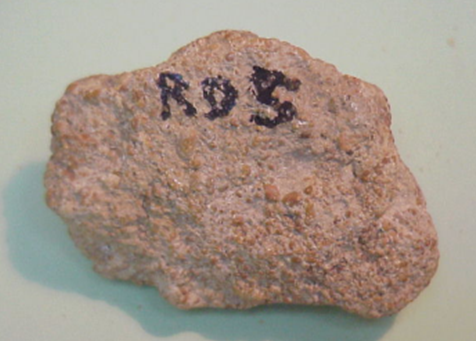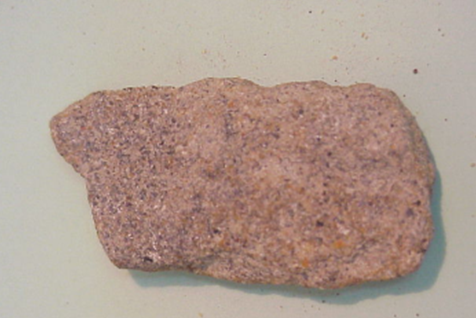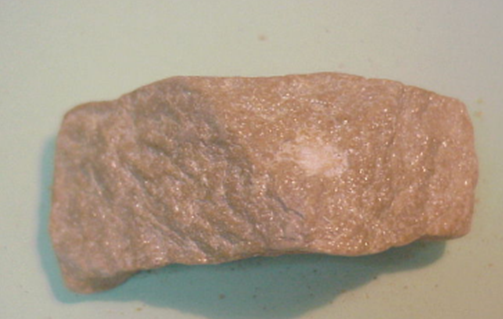CLASSIFICATION OF DETRITICAL SEDIMENTARY ROCKS.
Hello friends, welcome to a new release of my publications referring to the science of geology, today I will talk about the classification of detrital sedimentary rocks, although a great variety of minerals can be found on the surface of the earth, but the constitution of these part of there are a lot of rocks that are part of the mineral compound, such is the case of sedimentary rocks, which are mainly composed of clay minerals and quartz. the detrital rocks are the product of a process called weathering where agents such as wind, sun and water act directly on the geological formations (rocks), this allows erosion to release the particles of rocks giving As a source of sediments, which through a structural process of a geological cycle, causes the rocks to form matrices, which we call conglomerates, detrital rocks are classified according to the number of clasts they possess, as well as the size of these rocks. great structural conformation, because of this are classified by a series of tables, where you can see sizes of rocks, number of particles, type of rocks.

Below is an explanatory table where you can see how we classify, detrital sedimentary rocks, In addition you can also see the types of detrital rocks that exist:

CONGLORADO
It corresponds to a pudding, since it is observed that all the clasts are rounded (boulders), which indicates that they have undergone a prolonged transport process (greater roundness = + transport time = + wear). In the sample all the clasts are of carcita, although there are other smaller ones with elongated morphologies that are schists and shales (micro-conglomeratica). The cement that binds clasts and matrix is calcareo (CO3Ca). Observe the envelopes (of lighter shades) that surround the larger clasto.

GAP
A conglomerate is called "Gap" when the clasts that make up its skeleton are angular, indicating that it has suffered little transport and therefore little wear (unlike pudding). In the sample, both the clasto and the matrix. they are fragments of quartzite (compositionally correspond to a quartzite). Observe the internal lamination that has (dark and light bands of 4 to 5 cm power). This is a reflection of the stratification that has a larger scale.

MICRO-CONGLOMERATE (GRAUVAQUICO)
It is called micro-conglomerate when the clasts have a diameter less than 20 mm, there are also sand particles very thick (1 - 2 mm). In the control it is observed that the larger clasts are angular (gaps) and that they are also "floating" in a sandy matrix with a high clay content (> 15%), which gives them brown tones. Compositionally the matrix responds to a grauvaca. This type of texture is called "Floating" (not supported clasto) and is formed by currents of the "Debris-flow" type: very dense water and mud flows similar to those of the floods. The clasts are granite, metamorphic rocks, large quartz crystals and pink feldopotasic.

ARCOSA
Characteristic ocher-yellowish tones of the Arcosas. They are sandstones made up of grains of Quartz and Fesdespato. The sample presented responds to a particle size from coarse to very coarse sand, at the base of which a thin microconglomerate layer is observed (positive Granoseleccion). Observe the internal laminations, which are dyed by oxides of Fe and Mn, as well as by organic matter. This last component is the exclusive one of the Utillas formation. This type of rock is in study of its properties at the moment.

CALCARENITA
Very coarse-grained sandstone (in this case) consisting essentially of limestone grains (CO3Ca). There are even gravel-sized particles (> 2 mm) of the same composition. Note that most of the grains are very rounded. These are typical of coastal beach deposits.

CUARZOARENITA
Sandstone formed essentially by quartz particles. The reddish coloration is due to diagenetic oxidation phenomena (contemporaneous to its sedimentation). Observe the parallel internal lamination.
In the sample that is observed in the previous image, it is possible to observe the relation that it has with this sample, clearly the internal parallel lamination is observed, giving rise to sheets of 10 to 5 cm of power.

LITOARENITA
Sandstone composed essentially of rock fragments (metamorphic in this case). The sample has a particle size of coarse sand. The dominant lithologies are the schist and blackboard fragments (black and elongated). The bright greyish are of quartz, the white ones (minority of limestones and the ocreanaranjados of fesdespato potasic.

CUARZOARENITA - ORTOCUARCITA
Quartz-sandite recrystallized. In the sample it is observed that both the clasts, as the matrix and the cement are silicon (SiO2). There are some bright crystals, which are Muscovite micas. This indicates that this sample has undergone a process of metamorphism.

LIMOLITA
This type of rocks comes from the compaction and cementing of detrital particles of silt size (<1 / 16mm). The sample is not a pure siltstone since very fine sand particles are observed (1 / 8-1 / 16mm). This sample is of wind origin (dunes). Observe the erosion on the surface of the sample, produced by the impact of sand-sized particles driven by the wind (deflation) .Compositionally it would respond to a calcarenite (particles of CO3Ca), although some grains of quartz (grayish) and schist are also observed (blacks).

LUTITA SIPIOLITA
Compacted clay that has its origin in processes of neoformacion (Sepiolita). It is an expansive clay of the Montmorillonite group. Observe the presence of opening in sheets or what is called the milfoil aspect due to the disposition of clay expansive laminar minerals. In the presence of water the water will become part of the internal structure of the clays that constitute the rock which will produce a very important volume increase. Due to its color similar to that of the leather it is known as Mountain Leather. It appears interstratified with the variety clear of the previous sample.

References Bibliography :
- http://csmgeo.csm.jmu.edu/geollab/fichter/SedRx/sedclass.html
- http://www.kgs.ku.edu/General/Class/sedimentary.html
- http://itc.gsw.edu/faculty/bcarter/physgeol/sedrx/detrx.htm
- https://geology.com/rocks/sedimentary-rocks.shtml
- https://www.radford.edu/jtso/GeologyofVirginia/Rocks/GeologyOfVARocks2-4b.html
You received a 10.0% upvote since you are not yet a member of geopolis and wrote in the category of "geology".
To read more about us and what we do, click here.
https://steemit.com/geopolis/@geopolis/geopolis-the-community-for-global-sciences-update-4
If you do not want us to upvote and comment on your posts concerning earth and earth sciences, please reply stop to this comment and we will no longer bother you with our love ❤️
Congratulations @lisbethferrer! You have completed some achievement on Steemit and have been rewarded with new badge(s) :
Click on any badge to view your own Board of Honor on SteemitBoard.
For more information about SteemitBoard, click here
If you no longer want to receive notifications, reply to this comment with the word
STOP